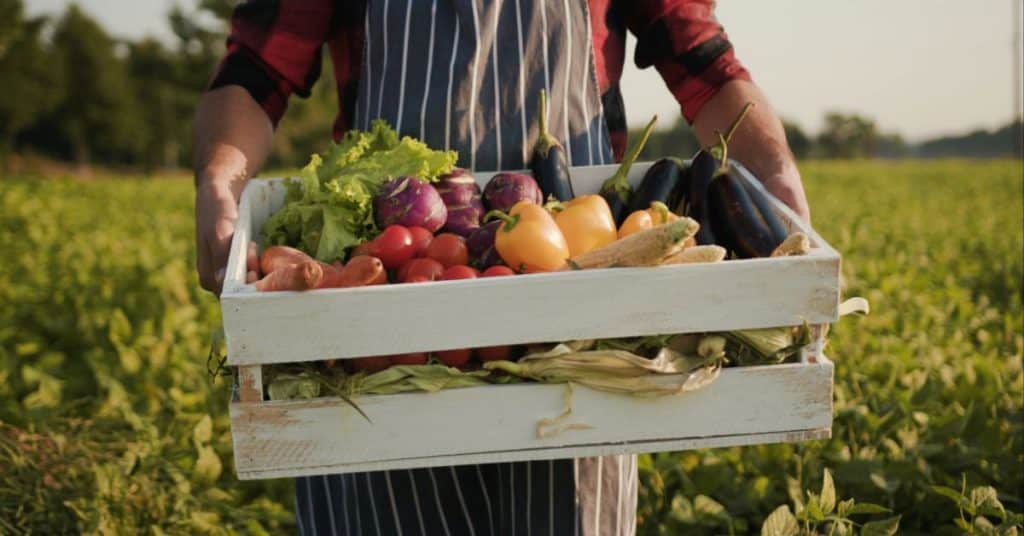

Eleven GMO (genetically modified organism) crops are commercially available in the US: corn, soybeans, cotton, canola, alfalfa, sugar beets, papaya, squash, potatoes, apples, and pineapple.[1] However, these GMOs contribute disproportionately to the total food supply. This is most evident in the processed food industry, in which three-fourths of all products contain GMO ingredients.[2]
Despite the widespread use of GMOs, legislative efforts to mandate their uniform labeling have faced tremendous opposition. Perhaps the best example of that opposition is the $45 million contributed by giants of food and agribusiness such as Monsanto, PepsiCo, and Kraft to defeat California’s Proposition 37 in 2012, which would have partially mandated GMO labeling throughout the state.[3]
Since then, only a couple of states have successfully passed labeling laws. On the federal level, a bipartisan bill introduced by Senators Pat Roberts and Debbie Stabenow in 2016 gave the USDA until 2020 to implement a uniform label for GMO foods. This resulted, a couple of years later, in the National Bioengineered Food Disclosure Standard, which is meant to ensure appropriate disclosure.[4]
However, this standard is far from perfect. For one thing, it doesn’t require a clear written label on every retail product. While manufacturers can choose to disclose bioengeneered ingredients by using written text or a symbol, they can just as easily comply with the regulation by using QR codes accompanied by “Text [command word] to [number] for bioengineered food information.”[5]
Is this sufficient? How many people do you know who pause in the middle of grocery shopping to scan items for information about ingredients? In what world is this optimal for consumers?
Also, the law does not apply to all food retailers: “Restaurants and similar retail food establishments (e.g., cafeterias, food trucks, airplanes, etc.) or very small food manufacturers” are exempt.[5] I appreciate that labelling requirements for restaurants pose different challenges than those for packaged foods, but considering how frequently most Americans eat out, this exemption is a large obstacle for greater transparency.
Finally, if a GMO food is altered to such an extent that it no longer contains a certain amount of modified genetic material, it no longer requires disclosure.[5] For example, certain sugars and oils may be created using bioengineered sugar beets, canola, etc., but they are so refined that they are deemed to no longer need the label. Similarly, animals fed bioengineered crops do not need to be labeled as such because the resulting animal product is considered separate from the bioengineered food. In such cases, manufacturers have the option to disclose “derived from bioengineering”; however, there’s no incentive to display that label, considering that public sentiment is mostly opposed to GMOs.[6]

So, waiting for the government to mandate more transparency isn’t likely a great strategy. If you want to avoid GMOs, you need to take a more active approach. Here are some quick tips to help you reclaim control:
1. Look for the USDA organic seal. Organic foods are strictly certified and not allowed to contain GMO ingredients.[7]
2. Look for foods verified as GMO-free. The most common third-party verification program is the Non-GMO Project. If you’re unsure whether to trust this or other verification programs, research them online to see what they require from producers.
3. Avoid processed foods. As mentioned above, most processed foods contain GMOs.[2] If you eliminate most of these foods from your diet, as in a whole-food plant-based (WFPB) lifestyle, you immediately reduce your potential GMO exposure. (Learn more about processed foods.)
4. Eat lots of fresh and frozen produce. Most of the produce you see in the grocery store is non-GMO. Even the GMO crops listed earlier—corn, soy, etc.—are predominantly used in animal feed, highly processed ingredients, or biofuels, not sweet corn or tofu, tempeh, and edamame.[1][8]
5. Research and purchase imported food products. Dozens of countries worldwide have either partially or entirely prohibited the cultivation or importation of GMO crops.[9]
6. Grow your own food using non-GMO seeds. The benefits of getting outside and working in a garden, if you are able to do so, are tremendous.
7. Buy from local farms. Depending on where you live, you may have access to a local farmers’ market or be able to find CSA programs from farms that strictly adhere to organic practices. If you’re unsure, ask whether they use GMO seeds or products.
I’ll leave you with this—there may be interesting arguments from both sides of the GMO debate, but only one of those sides is coordinating a strategic, highly expensive campaign against informed, transparent consumer choice. And this is perhaps the most important takeaway: irrespective of your feelings on GMOs and their effects on you and the broader environment, whether you care at all, the decision should ultimately be yours. It should not be the choice of industries driven only by profit, or the lobbyists they invest so heavily in.
Additional Resources:
Copyright 2025 Center for Nutrition Studies. All rights reserved.